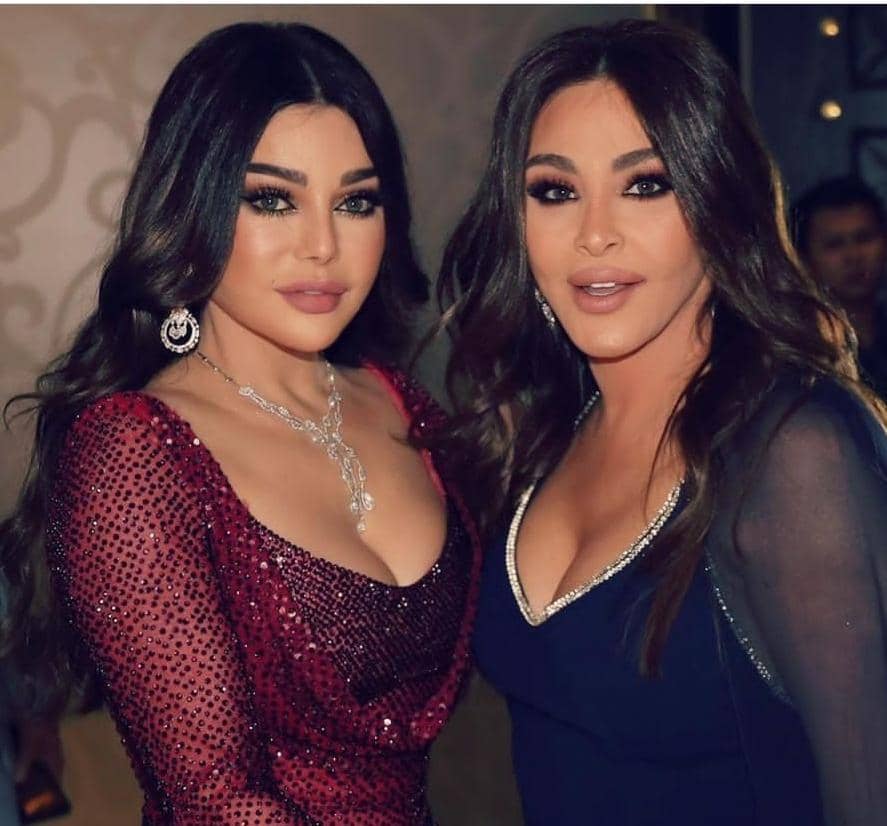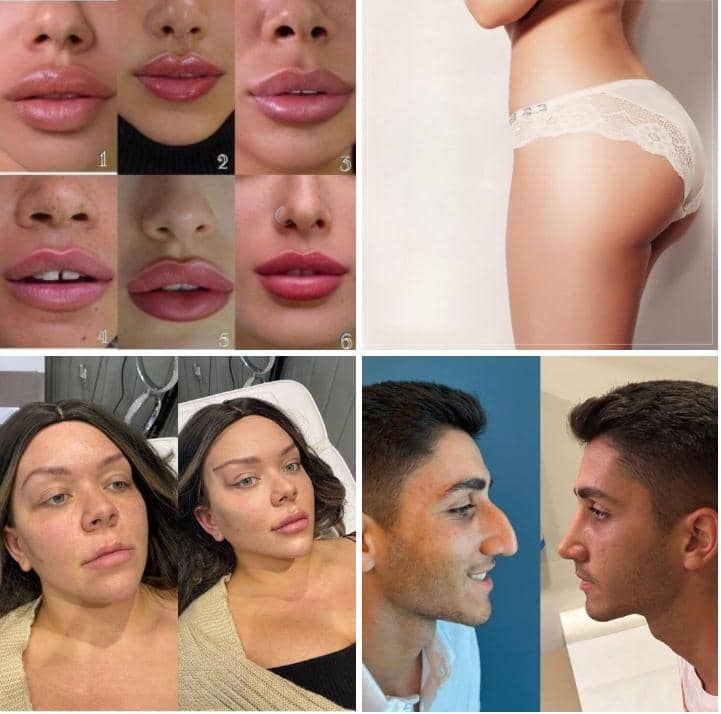
Contents of the article:
Introduction-
What is ethnic rhinoplasty?
Ethnic nose types-
Asian nose-
African American nose-
Latin nose-
Arabic nose-
The Arabic-Iranian nose (with two veins)-
Conclusion-
Introduction
With the size, shape, or function of your nose, you may be looking for surgical help to give you the look you want. Rhinoplasty, also known as rhinoplasty or nose reshaping surgery, is a procedure that reshapes the nose for an appearance that best suits your face, regardless of race.
Just like the shade of your hair, the color of your eyes, or the color of your skin, your nose reflects your proportions. Its structure, shape, and size are unique to you. Some patients wish to maintain the appearance of their nose while making minor changes. Others, in contrast, want to make major adjustments to change this defining trait. Our doctors in Shiraz, Iran, are skilled and trained to help you achieve your cosmetic goals with ethnic rhinoplasty.
We refer to ethnic rhinoplasty as cosmetic nose surgery for non-Caucasian patients. Our doctors are highly trained and have extensive experience in facial plastic surgery and are an excellent choice to perform nose correction for one of the most complex procedures in aesthetic medicine. With the diverse culture of Iran and their annual medical trips to Oman, Republic of Turkey, Iraq, Qatar and European countries, they are well experienced in working on a variety of ethnic nasal structures. These include:
1) Rhinoplasty in the Middle East:
This complex procedure focuses on reducing the overall size of the nose by identifying the parts that need improvement. The tip may need to be reshaped lengthwise or widthwise for better proportions. Or it may be necessary to reduce the dorsal hump. Nose tip sculpting can solve the bulging or round shape and enhance the balance of your face. The goal is a natural, beautiful nose that complements your other facial features.
2)Asian Rhinoplasty:

One of the essential components of Asian rhinoplasty is narrowing the width of the nostril. The lower part of the nostrils can be wide. Correction of this side of the nose can be performed in conjunction with other Asian rhinoplasty elements, but most often with narrowing and refining of the tip.
Asian rhinoplasty usually requires an external incision. However, our doctors in Iran at Ariana Company in Shiraz skillfully hide the external incision in the groove between the stump and the upper junction of the lip and cheek.
3)African American Rhinoplasty:

African American patients have a wide variety of nasal structures. Many patients desire more definition of the tip of the nose, enlargement of the bridge of the nose, or correction of enlarged nostrils. African American patients face different challenges due to factors that can only be distinguished by a qualified surgeon with years of experience in maxillofacial surgery. Our doctors in Iran at Aryana Center can build a structure where it is missing, such as the bridge of the nose. They are experts in improving the tip of the nose, reducing the width of the nostril, and determining how to artfully adjust the underlying bone or cartilage to give each patient the desired results.
4)Rhinoplasty in Latin America:

Patients with Hispanic heritage have different facial features depending on their country of origin. Latin Americans typically refer to people from Mexico, Cuba, and Puerto Rico, as well as Portugal and Spain. Although each group has similar nasal structures, there are subtle differences. These patients usually seek help with problems such as thick nasal skin and weak cartilage at the tip. Another common complaint is a wide, wide base of the nose and a prominent bump on the bridge of the nose.
The improvement is done by removing excess tissue at the base of the nose, which results in a narrowing. Overcoming the thick skin covering the weak cartilage at the tip can also lead to a thinner result. The cartilage structure at the tip of the nose provides a specific base for covering the skin.
5)Arabic nose:

It is difficult to classify the Arab nose because the Arab countries extend over a large geographical area and the mixing of Arabs with many peoples, as the Arab countries extend between West Asia and North Africa.
The shapes of the Arab nose vary, but there are widespread characteristics in which the Arab noses are similar.
And where the Arab nose in its composition is the middle between the European nose and the Afro-Asian nose in terms of the thickness of the skin and the strength of the nasal cartilages, as the skin in the Arab nose tends to be thick or medium in thickness. Arabian noses The skin is of medium thickness and the cartilage is of medium strength.
One of the forms of the Arab nose is the hawk nose. The surface of the nose is curved so that it resembles the beak of a hawk. It is caused by the bony and cartilaginous protuberance that leads to the curve of the surface of the nose and a drop in the front of the nose. This type of deformation can be mild, moderate or severe.It is worth noting that Persian surgeons have more experience in the Arab nose than foreign surgeons.
The Arab nose differs from the European nose in terms of thickness, and it is thicker and the cartilage is sweeter than the European nose, so the Arabic nose requires special methods to reshape the nasal cartilage, repair it, and strengthen it with additional cartilage, obtained from the nasal septum to give the new nose a beautiful shape and Distinctive, and thus removes protrusion and reduces its length and width.
6)The Iranian-Arab nose (with two veins):
Since the Islamic civilization and the neighborhood between Iran and the Arab countries caused ethnic mixing between them, there is a great similarity between the Iranian and Arab noses, so Iranian doctors have an accurate understanding of the structure of this type of nose and they are very successful in performing this type of rhinoplasty. Therefore, they must People from Arab countries who want rhinoplasty should definitely choose Iranian doctors instead of European and Turkish doctors.
Recovering from an ethnic rhinoplasty:
The first two weeks are crucial in the ethnic recovery process for rhinoplasty. You will have no bruising and swelling, and the structure of your nose will be supported with a splint for the first week. Our doctors in Iran and Shiraz will provide you with clear instructions for recovering from an ethnic rhinoplasty, including:
Avoid tilting your head.
Don’t blow your nose or sneeze.
Avoid lifting heavy objects or exercising for up to six weeks.
Sleep with your head raised above your chest.
Use cold compresses to reduce swelling.
drink a lot of water.
Take short walks to ensure proper circulation.
Avoid activities that may risk any impact on your nose.
Our doctors will explain that you will need at least two weeks of downtime after surgery. This means no strenuous work or activity during this initial phase of recovery, but you can expect to gradually increase your activities after this period.
Benefits of ethnic rhinoplasty:
There are many benefits that a patient can get from an ethnic rhinoplasty. Our doctors strive to make the face of all their patients harmonious and an appearance that increases their beauty and confidence. These benefits include:
A properly functioning nose – improves breathing difficulties, chronic sinus infections, or problems that occur from trauma.
Face balance – a nose that perfectly fits your face by making it smaller or larger.
Keep Your Appearance Patients want to be recognized when their surgery is complete.
Learn more about ethnic rhinoplasty procedures
Contact our doctors and consultants with your concerns about having an ethnic rhinoplasty. It will reshape or resize your nose to improve facial balance and attractiveness.
Looking for the best ethnic rhinoplasty near me? Contact us on WhatsApp.


